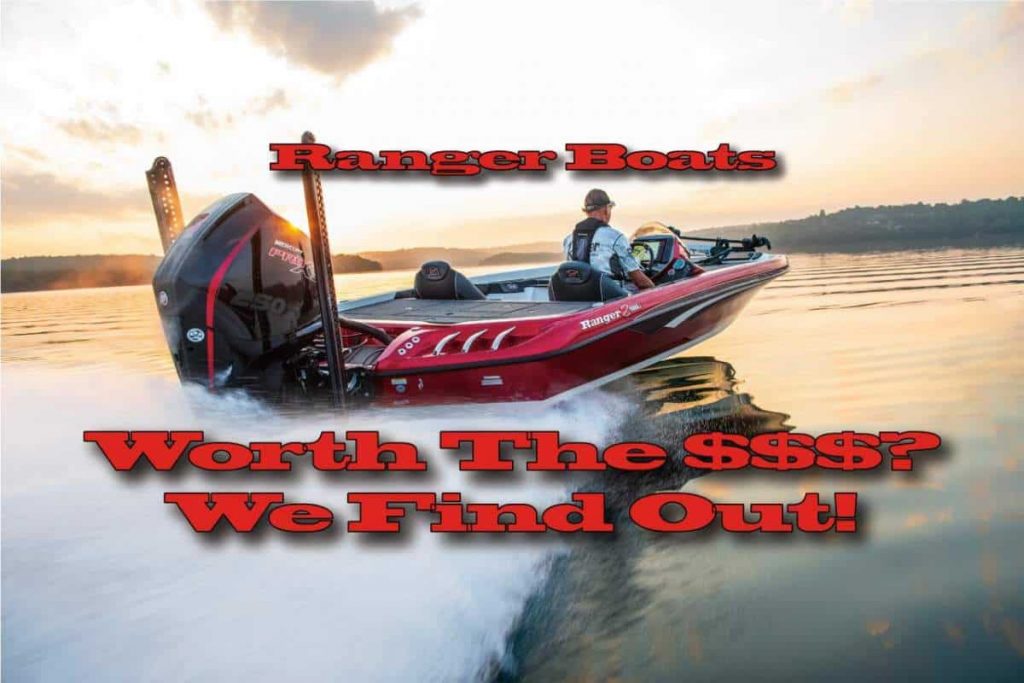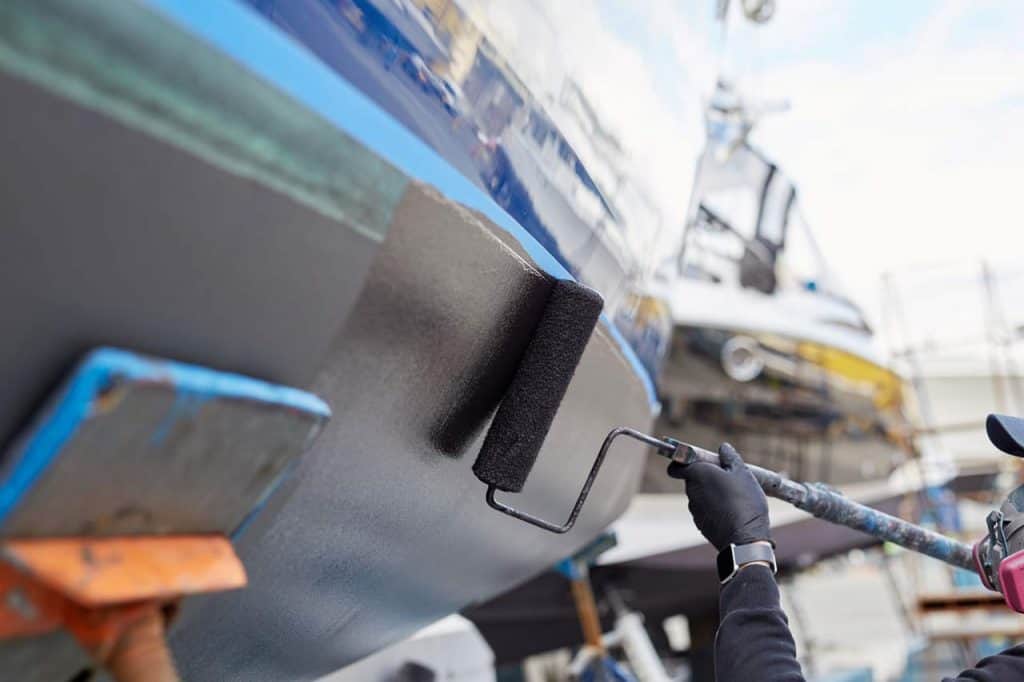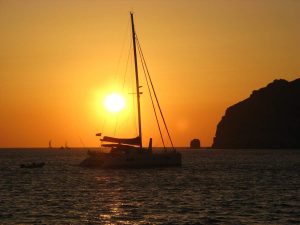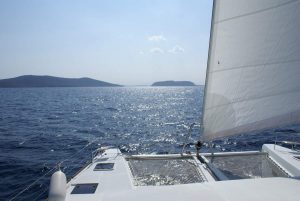Catamarans are known to be reliable and fun to operate. From the personal watercraft sized cats to the massive superyacht class of catamaran, all are great ships of the seas. But are catamarans safe in rough seas?
Catamarans are very safe in rough seas compared to monohull vessels of equal size. Now, I don’t want to give you a false sense of security. You should never deliberately go out in rough seas. However, when comparing the safety of catamarans to monohulls, catamarans win every time.
Let’s dive into how much more safe the catamaran is than a monohull. We’ll look at what makes the catamaran safer, and we’ll also take a look at what we consider to be rough seas. Then maybe we’ll make a little comparison between the catamaran and a monohull. Moving right along, we’ll start with a quick look at rough seas, so we’re on the same page. That is before I discuss how safe these amazing watercraft are.
What Are Rough Seas?
If we’re going to have a chat about catamaran safety in rough seas, we need a baseline to compare levels of calm versus levels of choppy waters. By definition, the word rough is having an uneven or irregular surface. Well, that’s just about every ocean there is. If we’re talking about lakes, then any major lake will be rough most of the time only by size alone. But, what do I mean when I say rough? And what do you think when you think of rough seas?
I can tell you from experience that rough seas are conditions that are beyond the standard terms. By this, I mean that they are worse than usual, and one could even say a bit treacherous. I wouldn’t call rough seas the perfect storm, but losing a ship in rough seas is certainly not unheard of.
Now, depending upon what size of vessel you are thinking about, your definition of rough seas will change. For example, a sixty-foot sailing catamaran will waters that are too rough for a twenty-four-foot model. However, for the following convention, in this article, I will define rough by the same baseline as the United States Coast Guard. Here’s a chart I made of the water conditions as described in the 2018 Recreational Boating Statistics publication.1
So, by definition:
Rough seas are defined by waves from two feet to six feet in height.
But, let’s take a look at why catamarans are so safe compared with many other boats when it comes to rough waters.
This Is Why Catamarans Are Safe (well, more reliable, that is)
Catamarans are safe in rough seas because of more stability, smaller draft, easier maneuverability, higher speed, and less floating so less seasickness in agitated waters. Of course, this is in comparison to a monohull vessel of equivalent length. The more excellent stability is due to a wide stance, double-hull design. The catamaran platform is, by its very nature, a safer and more reliable platform than a monohull ship design.
It comes down to simple physics. And it’s tough to argue with math.
“Math (and plants) don’t lie. People lie.”
Farmer Jer, 2016
One might also say that catamarans are safer due to their decreased fuel requirements compared with monohull vessels. As this is the case, it is much less likely to run out of fuel. It may not be an actual point, comparing physical craft to craft as it has a lot to do with proper planning, and of course, filling up your tank.
The Argument: Capsizing
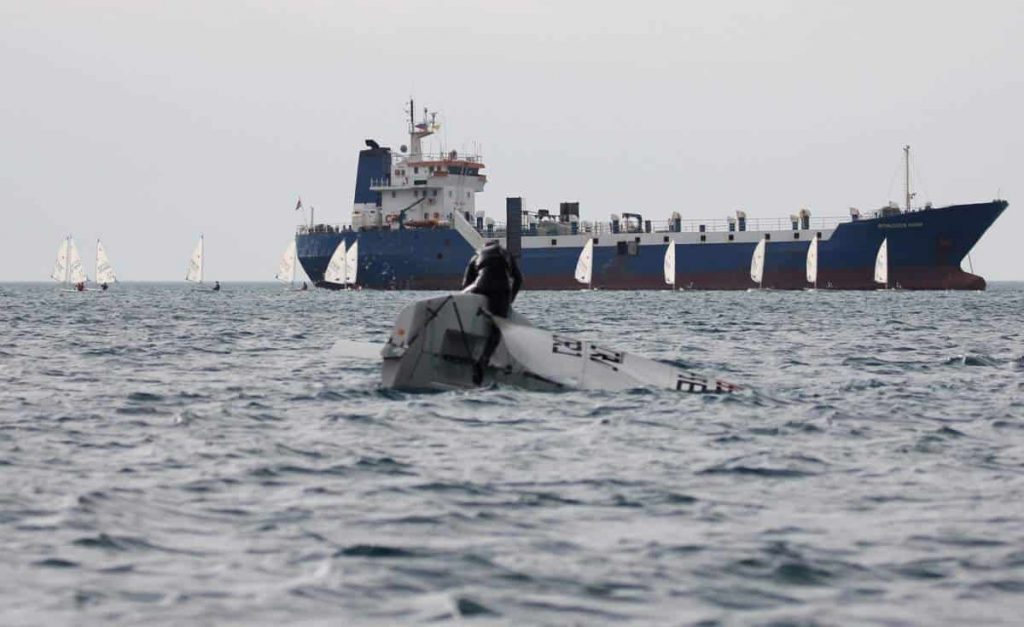
There is a big debate about the safety of a monohull versus catamaran when it comes to capsizing. The argument goes as follows. When you capsize a monohull, it is much easier to right the craft again. However, the flip side to this argument is the nearly unsinkable nature of the catamaran. Even if one flips over, due to the nature of having two hulls, it is almost impossible (well, highly unlikely anyway) to sink. So, it may be harder to flip back over once capsized, but I’d take having to wait for help on a flipped deck of a cat than to sink to Davy Jones Locker in my monohull.
Why Catamarans Are Safer Than Monohulls
There are several reasons why catamarans are safer than monohulls of equal length. The obvious is that they ride on two hulls instead of one. It would be like skating on two feet instead of just one foot. But, rather than get too deep into a skating analogy (it’s cold outside, so skating was the first thing that came to mind), let’s take a look at the top 6 reasons why I think catamarans are safer than monohull boats of the same length.
- Footprint. The larger platform of the catamaran means that it is more than twice as stable as a monohull. Think of a monohull like a bicycle or maybe a motorcycle. The catamaran is a car in this comparison. A car can stand on its own, having four wheels. A bike cannot, requiring a kick-stand to steady it unless it has the momentum to help hold it upright. A catamaran can sit in the waves and take a beating without breaking a sweat.
- Speed. The catamaran design is known to be faster than monohulls. IT helps cats to beat the storms and rough seas only by outrunning the storms. It may not always be possible, but it sure is more likely in a catamaran than a monohull.
- Space. The extra cabin space on a catamaran means that your gear can be adequately stowed and not squished up into every nook and cranny. Having gear stowed correctly in rough weather is vital to avoid injuries of those on board. The extra space a catamaran provides allows for more room to store your equipment safely.
- Maneuverability. Often enough, a catamaran will have dual engines, one on each hull. Now, this might cost a bit more in gas or maintenance, but it means that you can maneuver into and out of tight areas with ease compared to moving a monohull vessel.
- Less Draft. The weight dispersed onto two hulls on the water makes for less weight per hull. A monohull has all the pressure on one hull. That means that a monohull that has equal weight to a catamaran will sit lower in the water than the catamaran will. It is even more true when it comes to sailing catamarans compared to sailing monohull boats, which need to have a deep keel to stay upright in any kind of cross-wind.
Best Practises For Safely Operating A Catamaran In Rough Seas
There are several things you can do to be safe. The style, type, and size of the catamaran will dictate a lot of different safety practices. We’ll go over a few of the basics here. I’ve taken the liberty of creating a list of the top safety tips and best practices for going out on your catamaran. Safety is especially important in case you get inadvertently caught in rough seas.
1. Training and Education. According to the United States Coast Guard, statistical data1 shows that in 2018 the percentage of individuals killed in boating accidents, who did not have formal education relating to boating, made up 74.2% of deaths. Take a look at this chart I made based on those statistics:
2. Local Current Weather Tracking. One of the most important things you can do is educate yourself about the weather. Know what kind of weather is advised and keep on top of knowing as it changes. Knowledge is your best defense against being caught out in rough seas on your catamaran.
3. Personal Protective Equipment. Otherwise known as PPE for short, its mandatory equipment that boaters must have onboard or their person. Take a look at the article I wrote about the legal minimum requirements for North American boating. I included a link at the end of this article for your convenience. While you’re at it, read the article about life vests and life jackets, also linked at the end of this article.
Take a look at the Boating Guide Magazine’s
RECOMMENDED Boating Gear
You’ll find everything from Fish Trackers and GPS to anchors and tow ropes. We have either owned and tested or have a close friend who owns and has tested the products and services we recommend. There is no crap recommended on Boating Guide Magazine, we stand by that.
Bibliography
- U.S. Department of Homeland Security, U.S. Coast Guard, Office of Auxiliary and Boating Safely, 2018 Recreational Boating Statistics, COMMANDANT PUBLICATION P16754.32, August 19, 2019. https://uscgboating.org/statistics/accident_statistics.php accessed April 16, 2020.
- Yachts International. https://www.yachtsinternational.com/owners-lounge/sail-debate-monohull-vs-catamaran accessed April 16, 2020.
- Prasanta K Sahoo, Marcos Salas & Adam Schwetz (2007) Practical evaluation of resistance of high-speed catamaran hull forms—Part I, Ships and Offshore Structures, 2:4, 307-324, DOI: 10.1080/17445300701594237
Chasing Dory 5 Thruster Underwater Drone Review
Every time you go on a marine or a boat trip, the major issue that…
Best Cruising Catamarans For Couples
Looking for the best cruising catamarans for couples? Are you looking for the best spot…
Can You Wakeboard Behind A Bass Boat?
Are Ranger Boats Worth The Money? (We Find Out)
Many people consider boats to be a luxury item, and some of the costs involved…
Best Toys For The Boat – The Nemo Underwater 4K Drone
Should You Paint Or Re-Gelcoat A Boat Hull?
A regularly waxed gelcoat can last for up to 15 years on the boat. This…
Recommended Reading
- A Complete Catamaran Guide
- Boating Gear Requirements For Canada And USA Waters
- Staying Safe On A Catamaran: 24 Essential Tips
- Can A Catamaran Capsize?
- Winterizing Your Boat
- Life Vest Guide









